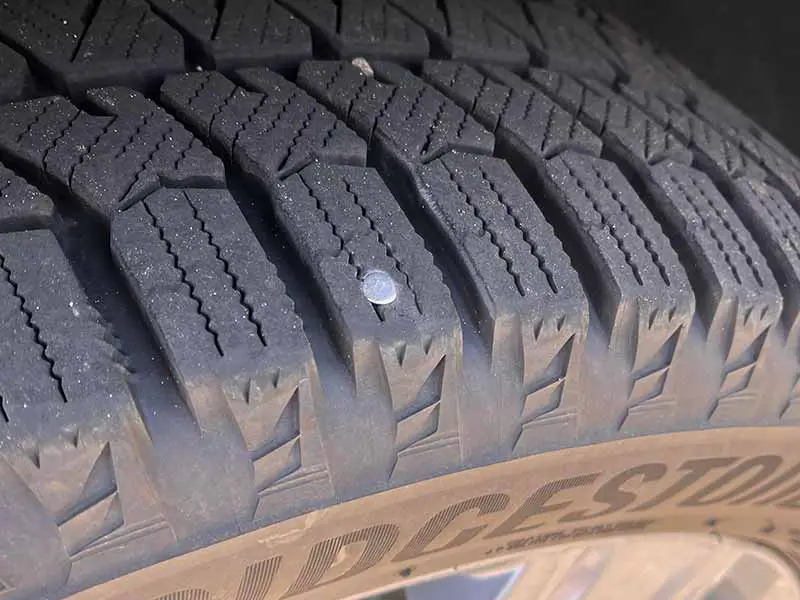Tire plugs are great for fixing flat tires on the roadside since they don’t require taking the wheel off to plug a tire. But how urgently do you need to head to your local tire shop once your tire plug is holding air?
How Long Does A Tire Plug Last?
A tire plug can last anywhere from a few weeks to several years. However, tire plugs are intended as a temporary fix and should be replaced with a tire patch at the earliest opportunity.
Sitting in a waiting room having a new tire mounted isn’t how anyone wants to spend an afternoon. But tires are very important to your safety and the others you share the road with.

Tire Plug Kit
Plugging a tire takes little time and money for a quick fix. We should cover some important details to help us properly inform you about how a tire plug works and what can affect how long a tire plug will last.
Let’s take a closer look.
Can I Drive Long Distance With A Plugged Tire?
A tire plug is a temporary fix for a punctured tire and is not recommended for driving long distances. It’s best to treat a plugged tire like a spare tire and limit the distance you drive to no more than 50 miles.
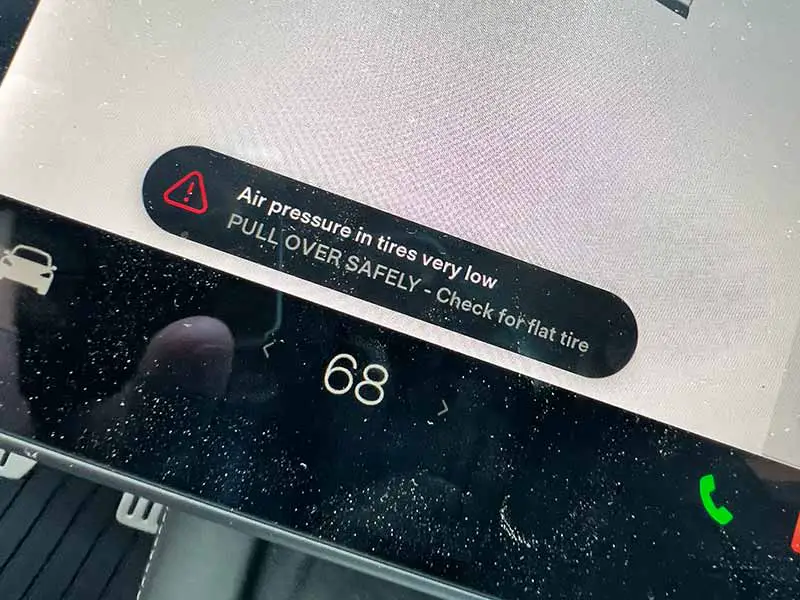
While a tire plug may seal the puncture and restore the tire’s ability to hold some or all of its recommended air pressure, it is not as secure as a permanent patch and may not be able to withstand the stress of higher speeds and longer distances.
It’s best to drive carefully until you can get to your local tire shop and have the punctured tire properly patched or the entire tire replaced if your mechanic can’t safely repair it.
How Fast Can You Drive With A Plugged Tire?
We recommend avoiding driving at speeds over 50 mph on a plugged tire. The stress of high speeds can cause the plug to come loose or the tire to fail.
Driving at high speeds on a plugged tire increases the risk of an accident since there could be damage to the tire’s internal structure. If the tire structure is severely damaged, the plug may hold air, but the tire could fail and lead to a catastrophic blowout.
High speeds significantly stress your tires and cause them to heat up quite a bit. A damaged tire should be properly inspected by the tire experts at your local tire shop and patched or replaced if necessary before driving at higher speeds.
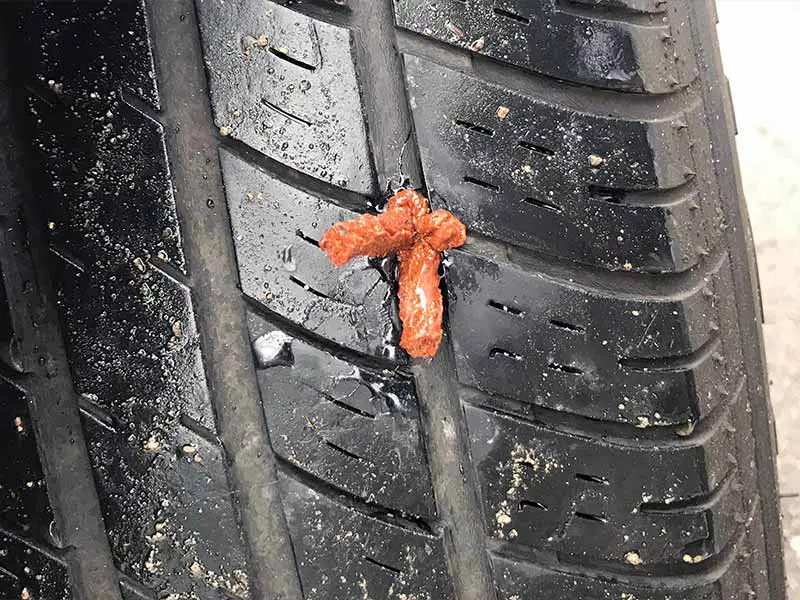
Can A Tire Plug Fall Out?
A tire plug can fall out, especially if you did not install it correctly or if the tire has been driven at high speeds or over long distances. Factors such as the puncture’s size and location, the tire type, and the driving conditions can also affect the likelihood of a tire plug falling out.
Are Tire Plugs Safe?
Tire plugs can be a safe and effective temporary fix for a flat tire if installed correctly. Even though a tire plug isn’t considered a permanent fix for a flat tire, a tire plug can last years.
Avoid plugging a tire in or near the sidewall, avoid high speeds, and limit your driving until you can have the tire puncture properly patched or replaced with a new tire if a tire professional can’t safely repair the tire.
How To Plug A Tire With A Plug Kit
Here is the general for using a tire plug kit:
- Locate the puncture either by visual inspection or using a spray bottle of soapy water to help detect leaks.
- Prepare the puncture with the insertion tool. Remove any debris from the puncture and roughen the edges of the hole. Clearing debris and roughening the hole’s edges will help the plug adhere to the tire better.
- Insert the plug into the puncture using the insertion tool. The plug is pulled back out, exposing the ends inside and outside the tire.
- Trim the exposed ends of the plug flush with the tire’s surface, leaving the plug securely in place.
- Inflate the tire to the proper air pressure.
It’s important to note that you should only use tire plugs for small punctures in the tire’s tread and not for the sidewall or larger holes.
When Not To Plug A Tire
There are a few different situations you shouldn’t use a tire plug.
Sidewall Punctures
The sidewall of radial tires flexes significantly. The tire plug will likely work its way out of the hole, and the tire could rapidly lose air and lead to a loss of control. Due to the significant movement in this area, you shouldn’t attempt tire repairs in this location.
Sidewall punctures also cannot be patched. Tire patches also can’t hold up to the flexing of your tire’s sidewall.
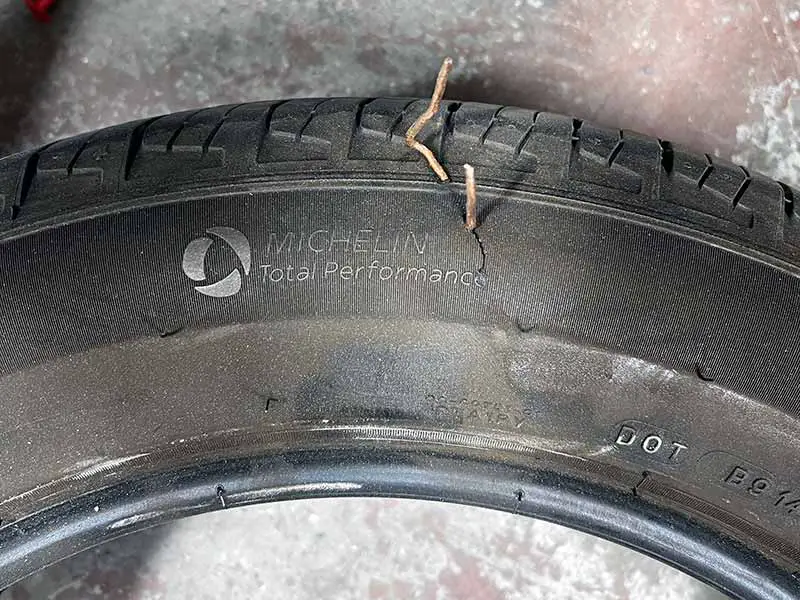
Tire Shoulder Punctures
Like the sidewalls of your tires, you shouldn’t attempt a plug or patch at the outer edges of your tire’s tread. This portion of the tire also flexes quite a bit, and a tire plug will not hold air for long at this location.
A puncture needs to be toward the center of the tire tread, where the steel belts provide enough strength to limit significant stretching and flexing that will cause the repair to break down over a short period.
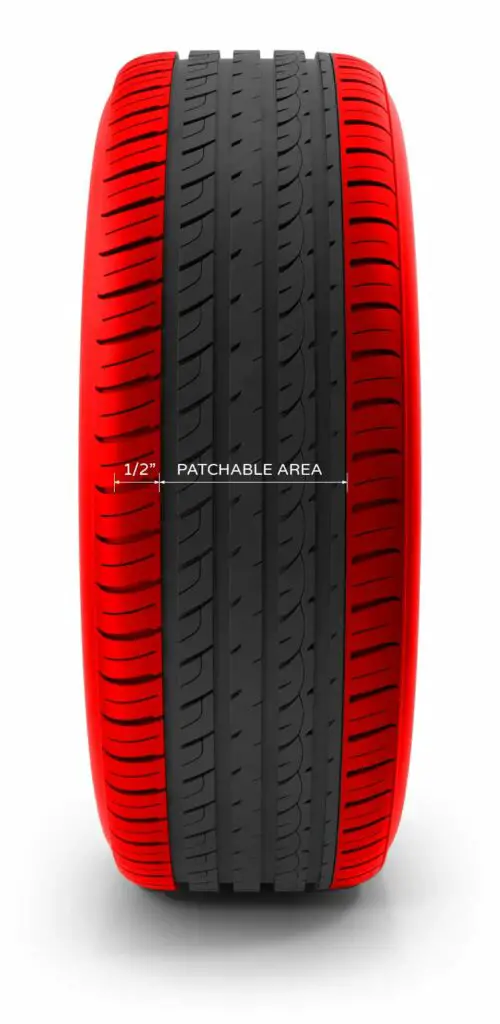
Large Punctures
You should only use tire plugs to fix a small puncture. Plugged tires can’t create a good seal when the hole is too large. They may hold air for a short period but will likely fail. Holes larger than 1/4″ can’t be safely plugged and must be patched to be correctly repaired.
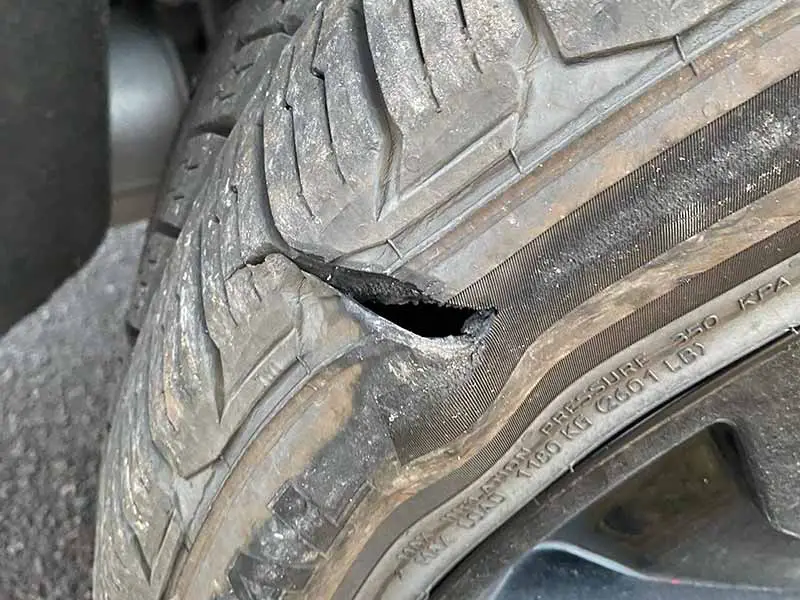
Tire Plug Vs Patch Vs Sealant
A tire plug and a tire patch are used to repair a punctured tire, but they are different methods.
A tire plug is a small piece of rubber or other material inserted into the puncture from the outside of the tire to seal it. The plug is typically inserted using a special tool and then trimmed flush with the tire’s surface. A tire plug is a temporary fix and is not as secure as a permanent patch.
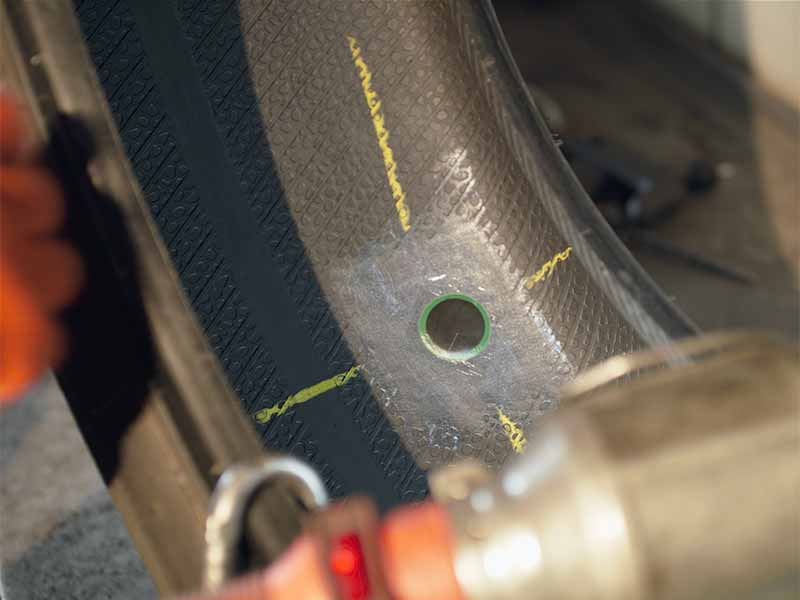
On the other hand, a tire patch is a piece of rubber or other material applied to the inside of the tire, covering the puncture. The patch is cemented or vulcanized to the tire, creating a permanent bond. A tire patch is a more secure and permanent repair than a tire plug.
Plugging a tire can be done while the tire is still on the vehicle. Patching a tire requires removing the tire from the wheel so that the patch can be applied to the inside of the tire.
A tire sealant is a more convenient flat tire repair method; it can seal multiple punctures. However, a sealant may not be able to repair larger holes, and it can clog your valve stem, damage your TPMS sensor, as well as be difficult to remove.

Tire Sealant
Resources
Below are some links you may find helpful when learning about tires
- How long can you drive on a plugged tire? – Driving Press
- How long can you drive on a plugged or patched tire? – Your Mechanic
Final Thoughts
It is important to understand that a tire plug is a temporary fix for a punctured tire, and it is not recommended to wait to have the tire permanently patched after it has been plugged. A plugged tire may not be able to hold the correct air pressure for an extended period, leading to uneven wear and decreased fuel efficiency.
A plugged tire may not be able to withstand the stress of high speeds and long distances, which can increase the risk of a tire failure. It’s best to have your punctured tire inspected by a professional as soon as possible. They can determine if your tire needs to be repaired or replaced to ensure the safety and longevity of your tires.
Good luck and happy motoring.
